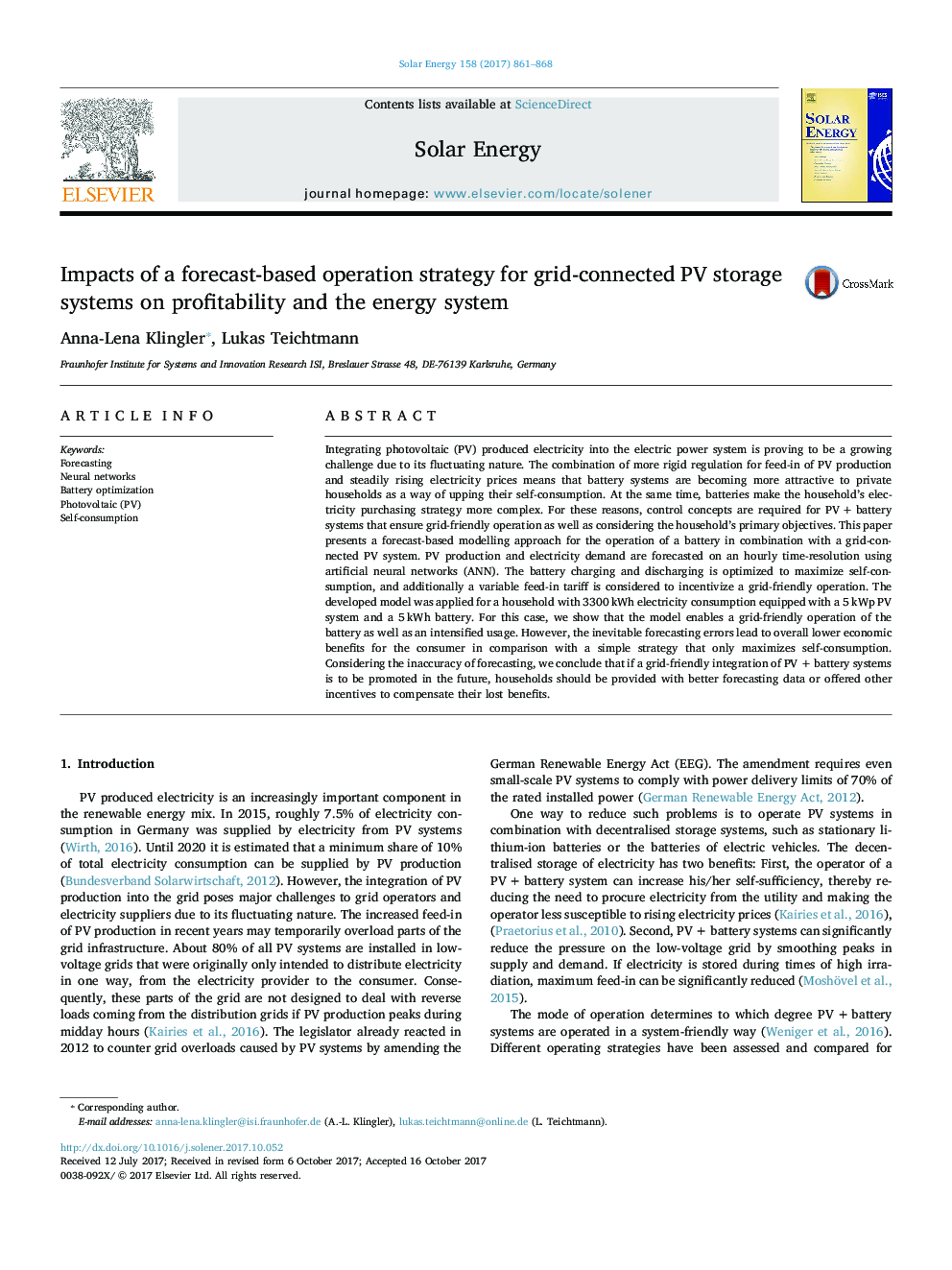| Article ID | Journal | Published Year | Pages | File Type |
|---|---|---|---|---|
| 7936236 | Solar Energy | 2017 | 8 Pages |
Abstract
Integrating photovoltaic (PV) produced electricity into the electric power system is proving to be a growing challenge due to its fluctuating nature. The combination of more rigid regulation for feed-in of PV production and steadily rising electricity prices means that battery systems are becoming more attractive to private households as a way of upping their self-consumption. At the same time, batteries make the household's electricity purchasing strategy more complex. For these reasons, control concepts are required for PVâ¯+â¯battery systems that ensure grid-friendly operation as well as considering the household's primary objectives. This paper presents a forecast-based modelling approach for the operation of a battery in combination with a grid-connected PV system. PV production and electricity demand are forecasted on an hourly time-resolution using artificial neural networks (ANN). The battery charging and discharging is optimized to maximize self-consumption, and additionally a variable feed-in tariff is considered to incentivize a grid-friendly operation. The developed model was applied for a household with 3300â¯kWh electricity consumption equipped with a 5â¯kWp PV system and a 5â¯kWh battery. For this case, we show that the model enables a grid-friendly operation of the battery as well as an intensified usage. However, the inevitable forecasting errors lead to overall lower economic benefits for the consumer in comparison with a simple strategy that only maximizes self-consumption. Considering the inaccuracy of forecasting, we conclude that if a grid-friendly integration of PVâ¯+â¯battery systems is to be promoted in the future, households should be provided with better forecasting data or offered other incentives to compensate their lost benefits.
Related Topics
Physical Sciences and Engineering
Energy
Renewable Energy, Sustainability and the Environment
Authors
Anna-Lena Klingler, Lukas Teichtmann,
